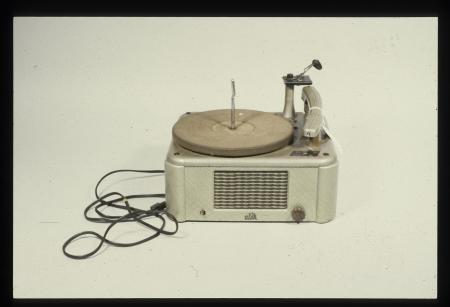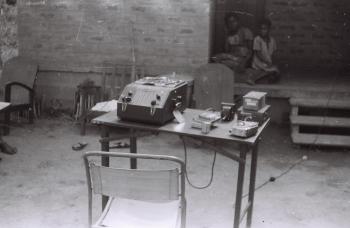 A number of years ago, I was asked to pick up research materials created by a deceased scientist that she had maintained in her home office. When I arrived, her family was holding an estate sale. When I asked about the “records,” a man nearby overheard and immediately offered double whatever price I was paying for them. He clearly assumed that I was referring to record albums. I explained that I was there for her institutional records – her files – that belonged to her office, and he didn’t seem to quite understand. I had to assure him that there were no record albums in the boxes.
A number of years ago, I was asked to pick up research materials created by a deceased scientist that she had maintained in her home office. When I arrived, her family was holding an estate sale. When I asked about the “records,” a man nearby overheard and immediately offered double whatever price I was paying for them. He clearly assumed that I was referring to record albums. I explained that I was there for her institutional records – her files – that belonged to her office, and he didn’t seem to quite understand. I had to assure him that there were no record albums in the boxes.
My team uses the word “records” a lot. We define records, we appraise records, we provide records management guidance, we manage a records center, we accession records into the archival collections, and we describe and preserve those records. We also understand that “records” is a term that many people don’t fully understand.
As many organizations around the country celebrate Records and Information Management Month, this is a good time to answer the question, “What is a record?”
The Smithsonian Institution Archives defines a record as any official, recorded information, regardless of medium or characteristics, which is created, received, and maintained by a Smithsonian museum, office, or employee. This definition encompasses almost any piece of paper, electronic file, email message, photograph, architectural drawing, audiovisual recording, or website that passes through the hands of a Smithsonian employee while conducting business. We often use the term “files” as synonymous with “records” since it tends to be a more familiar term. However, files include some materials (such as documents collected simply for reference purposes) which are not considered to be records, and does not necessarily include materials such as film, videotapes, or audio recordings.
Our definition of a record has been in use for decades and is rather broad. Recently, many definitions of a record have become narrower and refer to the need to preserve information. An example is A Glossary of Archival and Records Terminology by Richard Pearce-Moses and published by the Society of American Archivists in 2005 which defines a record as “data or information in a fixed form that is created or received in the course of individual or institutional activity and set aside (preserved) as evidence of that activity for future reference.”
Definitions that include a preservation clause have opened the way for a new category – the nonrecord. Non-records are data or information in a fixed form that is created or received in the course of activity but does not warrant preservation. Institutions define non-records differently, but they often consist of copies, drafts, information entered into a database, or logistical materials.
 The Smithsonian Institution Archives does not use the term “nonrecord.” Materials are either personal (not created within the course of business) or institutional records. We do, however, recognize that not all records are valuable for the same length of time. Some records will hold their historical, legal, or evidentiary value forever, and will become part of the archival collections. Other records will be valuable for a certain number of years after which they will be eligible for destruction. Still others will only be of immediate value and no longer necessary to keep after a very short period.
The Smithsonian Institution Archives does not use the term “nonrecord.” Materials are either personal (not created within the course of business) or institutional records. We do, however, recognize that not all records are valuable for the same length of time. Some records will hold their historical, legal, or evidentiary value forever, and will become part of the archival collections. Other records will be valuable for a certain number of years after which they will be eligible for destruction. Still others will only be of immediate value and no longer necessary to keep after a very short period.
There are many variations in the definition of “records,” but the term typically refers to something different for an information professional than for a collector of vintage audio recordings. That doesn’t mean that a record album couldn’t be a record, though.
Related Resources
Records Management, Smithsonian Institution Archives
How the Archives Gets its Records (or, Golden Lion Tamarins Galore), The Bigger Picture, Smithsonian Institution Archives
Produced by the Smithsonian Institution Archives. For copyright questions, please see the Terms of Use.

Leave a Comment